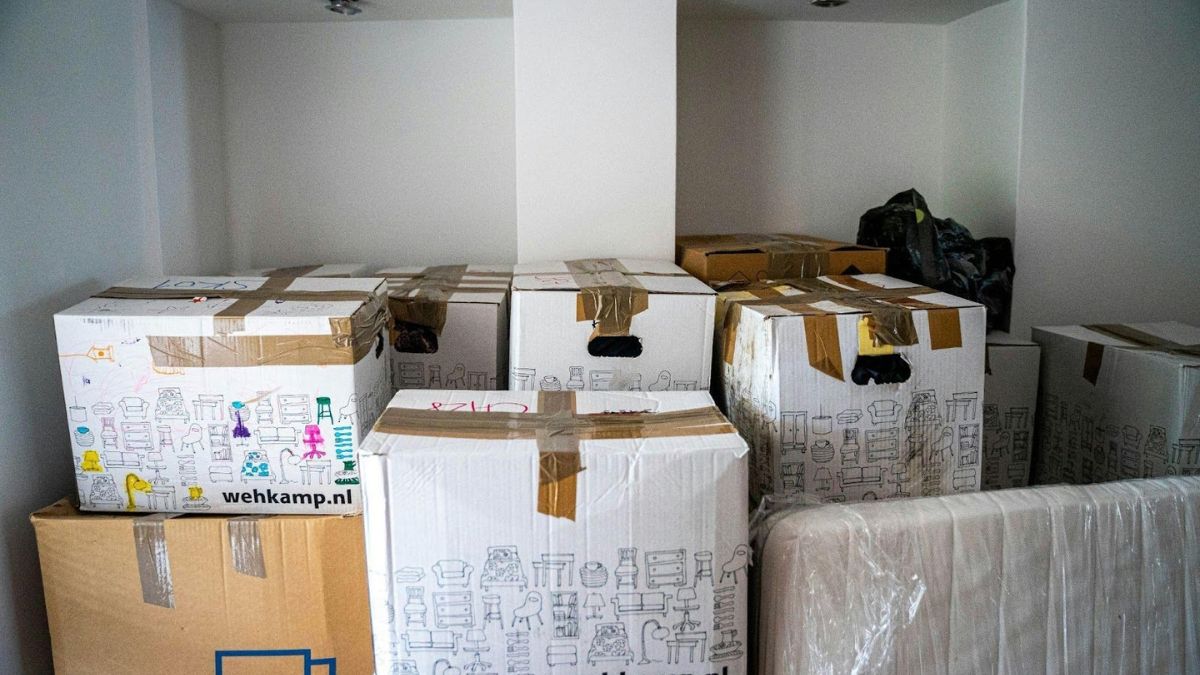BUSINESS
Top Benefits of Choosing Certified Refurbished Electronics

Technology continues to advance quickly. New gadgets come out every year, often with higher price tags. While many people want the latest devices, not everyone can afford them. That’s why certified refurbished electronics have become such a smart option.
Choosing certified refurbished devices can be a smart move for individuals, families, schools, and businesses. Let’s explore the many benefits of choosing certified refurbished electronics and why they are a growing trend.
Significant Cost Savings
One of the main reasons people choose refurbished electronics is the savings. Certified refurbished products are often sold at much lower prices than brand-new ones. You might save anywhere from 20% to 50%, and sometimes even more.
These savings can make a big difference, especially when buying expensive items like smartphones, laptops, or tablets. For example, a refurbished laptop might cost $400 instead of $800 for the same model new. That extra $400 could go toward other important needs or upgrades.
Reliable Quality
There is a common myth that refurbished means poor quality. This is simply not true when the product is certified. Certified refurbished electronics go through a strict inspection and testing process. Any faulty or worn-out parts are replaced with new ones. Then the product is tested again to make sure everything works correctly.
This process ensures that buyers receive a product that performs like new. Many people report that they can’t even tell the difference between a certified refurbished item and a brand-new one.
In fact, in some cases, certified refurbished products are even more carefully inspected than new ones, because they’ve already been handled and must meet high standards before being resold.
Warranty and Return Options
Buying refurbished doesn’t mean giving up peace of mind. Most certified refurbished products come with a warranty. Depending on the seller, this warranty can last from 90 days to one full year. Some companies also offer optional extended warranty plans.
In addition to warranties, many sellers allow you to return the product if you’re not satisfied. These return windows are usually between 14 and 30 days. Having both a warranty and a return policy gives customers confidence when buying refurbished.
You can shop knowing that if something goes wrong, you’ll have support.
Eco-Friendly Choice
Another major benefit of certified refurbished electronics is the positive impact on the environment. When people reuse products instead of buying new ones, it reduces electronic waste. Electronics are made with materials like plastic, metal, and rare earth elements. These materials require a lot of energy and resources to extract and process.
By choosing refurbished items, you’re keeping electronics out of landfills and lowering the demand for new manufacturing. This reduces energy use, air pollution, and carbon emissions.
Buying refurbished is a simple but effective way to help the planet.
Great for Businesses and Schools
Organizations that need large numbers of devices often struggle with high costs. Whether it’s a school equipping classrooms or a business setting up offices, technology expenses can add up quickly.
Buying certified refurbished electronics allows organizations to stretch their budgets further. For example, when schools or companies need to buy bulk iPads, going the refurbished route can cut costs dramatically while still meeting their technology needs.
This also allows them to allocate funds to other areas, such as teacher salaries, training programs, or business development.
Access to Older Models
Some people don’t want or need the latest device model. They may prefer the features, size, or software compatibility of an older version. However, once a new model is released, manufacturers stop selling older versions as new.
Certified refurbished products provide access to these models. For instance, if you liked an older iPhone model or a laptop with specific ports, you may still find it as a refurbished product.
This is also helpful for businesses running software that only works with certain operating systems or hardware configurations.
Less Depreciation
Brand-new electronics start losing value the moment they’re opened. A $1,000 laptop might be worth only $700 after a few months-even if it’s barely used. That fast drop in value is known as depreciation.
Refurbished electronics don’t suffer from this as much. Since they’re already priced lower, their resale value tends to hold steady. This can make them a better investment, especially if you plan to upgrade later and resell your device.
You get the tech you need without watching your money lose value overnight.
Certified by Trusted Sources
It’s important to note that not all refurbished products are the same. Certified refurbished electronics are restored by the original manufacturer or an authorized refurbishing partner. That means the people working on the device are trained to meet high standards.
Trusted names like Apple, Dell, HP, Lenovo, and Samsung offer certified refurbished products. They use original parts and follow strict procedures to ensure quality.
Before buying, make sure the product is labeled as “certified refurbished” and comes from a reliable source. This ensures you’ll receive a dependable product with good support.
Reduces Supply Chain Pressure
Every new device requires a chain of resources-metals, plastics, labor, shipping, and more. Global supply chains have been under pressure in recent years, leading to delays and price increases.
When more people choose refurbished electronics, the pressure on these supply chains is reduced. There’s less demand for new parts and manufacturing. This also helps avoid shortages and makes the tech market more sustainable.
It’s a smart way to reduce waste and support better use of global resources.
Helps Create a Circular Economy
A circular economy is one where products are reused, repaired, and recycled instead of thrown away. Certified refurbished electronics fit perfectly into this model.
By choosing refurbished items, you’re helping to extend the life of valuable resources. You’re also supporting companies that invest in sustainable practices.
When more people participate in the circular economy, the impact adds up. It means less trash, more jobs in repair and refurbishment, and a cleaner environment.
All About Certified Refurbished Electronics
Certified refurbished electronics are a smart choice for many reasons. They offer real savings, dependable quality, and environmental benefits. Warranties and return options give buyers confidence, while access to older models and less depreciation make them a practical solution.
Whether you’re an individual looking for a phone or a business needing laptops, refurbished products give you more for your money. As demand for affordable and sustainable tech grows, certified refurbished electronics continue to prove their value.
So next time you’re shopping for technology, consider choosing certified refurbished. It’s a smart move for your wallet-and the world.
Looking for more tips and ideas? We’ve got you covered. Check out some of our other posts now.
BUSINESS
How AI is reshaping search engine optimisation and what businesses must do next

Modern search is changing faster than any earlier digital shift, and many businesses find that old SEO habits no longer work. Search engines lean heavily on AI to read meaning, context, and behaviour, making the ranking process more profound and complex overall. AI does not look for keywords or tags but learns intent, predicts what a user will need, and delivers in a much more personalised manner. This means companies have to understand how AI shapes this new search journey if they want to remain visible in an online space that is becoming increasingly competitive by the day.
AI is turning search into a prediction tool
Now, AI knows what users want even before they’ve finished typing their query. Since search engines analyse patterns from millions of actions in order to make an educated guess as to what someone is looking for, businesses should create content that answers questions more than simple phrases. While traditional SEO relied on inserting terms in strategic places, AI-based search rewards clarity. Brands looking to stay visible have to think like users, not like algorithms from days of old. All this has made content that solves real problems the most robust way to reach customers in this new search environment.
AI is redefining authority and expertise
AI no longer judges authority based solely on backlinks. It examines how the knowledge is reflected in the content itself, for example, if information fits patterns of expert behaviour, whether the writer seems reliable, and so forth. Here, a business could benefit from a search engine optimisation expert, but success will still depend on the content’s authenticity and transparency. Clear benefits are evident when companies explain what they know, why it matters, and how it will serve the user. Authority now comes with honest communication, not with tricks.
AI is making user experience a ranking factor
Search engines can now track in real time how users interact with pages, including slow pages, confusing layouts, and distracting elements, which signal that people are unhappy. If too many people leave too quickly, AI knows the page failed. For this reason, businesses must think about user experience in their SEO strategy. Clean design, fast loading, and easy navigation are all ways AI can gain trust in a site. The goal is to create an experience where users naturally stay longer because they find exactly what they hope to see. Better experience directly supports better visibility in the new AI-driven search world.
AI changes the way content is evaluated
SEO used to rank content by formula-like means, such as density, tags, and structural signals. Now, AI measures the readability, usefulness, and relevance of content to real humans. If the content does not clearly solve a problem, users leave quickly, and AI learns it is not valuable. It also checks for accuracy, consistency, and tone. That means businesses have to focus on simple writing, real-life examples, and insights worth something. Content that sounds repetitive or artificially created loses impact because AI models pick up patterns that indicate low trust or low usefulness.
AI is transforming how reviews and brand image affect rankings
Currently, AI reads customer reviews, social posts, and brand conversations to understand a company’s level of trust. It interprets emotional tone and detects issues that customers might not say directly. One negative online trend might affect how AI views a brand. That is how vital reputation has become. Businesses that invest in immersive customer experiences and respond sincerely to customer feedback gain more trust from AI. That’s also why some brands rely on online reputation management services. However, real improvement still depends on honest communication and timely problem-solving across all digital channels.
AI is encouraging long-form and context-rich content
Short pages full of quick answers no longer work as well as thoughtful, meaningful content that explains ideas from different angles. AI reads full context, not scattered lines; it rewards depth, clarity, and logical flow. Businesses should write to feel complete and valuable, not to chase a short hack down the page. This includes answering related questions, providing a simple explanation, and maintaining a natural flow of content. When content reflects real understanding, AI recognises it as valuable and pushes it higher in the search results.
AI forces businesses to change almost daily
AI search isn’t stable; it changes with user behaviour. What works this month may shift next month. Therefore, companies should continually update their content to align with user needs and adapt to new patterns. In order to keep up, businesses must stay curious, be flexible, and test new ideas. The brands that grow now are the ones that keep an eye on how users behave and adjust their strategies in step. In an AI-led search system, adaptation is no longer optional; it is the bedrock of long-term visibility.
In this new landscape, businesses must build content around real problems, not keywords. They will need to study audience behaviour and remain active in shaping their digital reputation. More than anything else, AI will reward honesty, depth, and usefulness. Companies that invest in these values will find that being visible and relevant comes more easily. The future of SEO is about real understanding and value in every single piece of content. It is not about tricks or shortcuts.
BUSINESS
Getting Started with Numberlina.com: Tips and Tricks for New Users

Welcome to Numberlina.com, your new go-to platform for all things data-related! If you’ve just stumbled upon this exciting website, you’re in for a treat. Whether you’re looking to analyze numbers, create visualizations, or simply make sense of complex datasets, Numberlina.com has got you covered. As a new user, starting off can feel overwhelming with so many options and features at your disposal. But don’t worry! This guide is packed with tips and tricks that will help you navigate the site like a pro in no time. Let’s dive into what makes Numberlina.com special and how you can make the most of your experience!
What is Numberlina.com?
Numberlina.com is an innovative online platform designed to simplify data analysis and visualization. It provides users with a suite of powerful tools that cater to both beginners and seasoned professionals alike.
The site allows you to upload datasets, perform calculations, and generate insightful graphs effortlessly. With its user-friendly interface, navigating through various features becomes a breeze.
Beyond just number crunching, Numberlina.com fosters collaboration by allowing users to share their findings with others easily. You can also explore community-contributed content for inspiration or guidance.
Whether you’re working on academic projects, business reports, or personal endeavors, Numberlina.com aims to make your experience as seamless as possible while empowering you with essential analytical skills.
The Benefits of Using Numberlina.com
Using Numberlina.com unlocks a world of possibilities for users seeking convenience and efficiency. This platform is designed to simplify complex tasks, making everyday activities more manageable.
One standout benefit is its user-friendly interface. Even beginners can navigate the site with ease, allowing them to access tools quickly without any steep learning curves.
Moreover, Numberlina.com offers a wealth of resources tailored to meet diverse needs. From analytical features to customizable options, users have everything they need at their fingertips.
The community aspect cannot be overlooked either. Engaging with other users fosters collaboration and knowledge sharing, enhancing the overall experience while using the platform.
Consistent updates ensure that Numberlina.com remains relevant and progressive in meeting user demands. With new features regularly rolled out, there’s always something fresh to explore and utilize effectively.
Signing Up for an Account
Getting started on Numberlina.com is straightforward. Begin by clicking the “Sign Up” button prominently displayed on the homepage.
You’ll need to provide some basic information like your email address and create a password. Make sure your password is strong; it’s your first line of defense.
After filling in these details, check your inbox for a verification email. This step ensures that you own the provided email address and adds an extra layer of security to your account.
Once verified, simply log in using your new credentials. You’re now part of the Numberlina community!
Feel free to explore various features right away or take a moment to personalize your profile settings for an enhanced experience tailored just for you.
Navigating the Website and Its Features
Once you land on Numberlina.com, the user-friendly interface welcomes you. The clean layout makes it easy to find what you’re looking for.
Start with the main menu at the top of the page. Here, you’ll notice categories that neatly organize features and tools available. This structure saves time and keeps your searches efficient.
Explore the dashboard after logging in. It centralizes all your activities and notifications, ensuring nothing important slips through the cracks.
Don’t forget about the search bar; it’s a handy tool for quickly locating specific resources or information without endless scrolling.
As you dive deeper into each section, take advantage of interactive tutorials. They guide you step-by-step through various functionalities, making navigation even smoother.
Keep an eye out for updates as well! New features often roll out to enhance user experience further, so stay engaged with announcements on Numberlina.com.
Tips for Maximizing Your Experience on Numberlina.com
To make the most of your time on Numberlina.com, start by exploring all the features available. Dive into user tutorials and guides; they are incredibly helpful for newcomers.
Engage with the community forums. Sharing experiences or asking questions can provide insights you might not find elsewhere. You’ll also connect with like-minded individuals.
Set personalized notifications to stay updated on new content that matters to you. This way, you won’t miss out on relevant updates or discussions.
Regularly check for any featured articles or tips from experienced users. These resources can enhance your understanding and application of the site’s tools.
Don’t hesitate to experiment with different functionalities. Trying out new features often leads to discovering great ways to utilize everything Numberlina.com has to offer.
Troubleshooting Common Issues
Troubleshooting common issues on numberlina.com can be straightforward. If you find yourself unable to log in, double-check your username and password. Sometimes, a simple typo is all it takes.
If the website is slow or unresponsive, try clearing your browser’s cache. This helps eliminate any stored data that might cause glitches.
For those experiencing difficulty with features, ensure you’re using an updated browser version. Compatibility issues often stem from outdated software.
Should you encounter error messages, take note of the exact wording. A quick search on numberlina.com’s help section may lead you to solutions tailored for specific problems.
Don’t hesitate to reach out to customer support if things still aren’t working as expected. They are equipped to assist with various concerns and can provide personalized guidance when needed.
Conclusion and Future Updates to Look Out For
As you embark on your journey with Numberlina.com, it’s clear that this platform offers a wealth of opportunities to enhance your experience. The ease of navigating through its features will make it straightforward for you to engage with various tools and resources.
Looking ahead, keep an eye out for exciting updates and enhancements that the team behind Numberlina.com has planned. They are committed to continually improving user experience based on feedback and trends in technology. This means new features, better integrations, and possibly even more ways to connect with other users.
Staying engaged with their blog or newsletter can be beneficial too. Being informed about upcoming changes will enable you to utilize all the advantages Numberlina.com provides effectively.
Enjoy exploring everything this dynamic platform has to offer!
BUSINESS
When a Home Lets Go: The Strange Magic Hidden Inside Every Move

Moving is a pragmatic task: pack, transport, unpack. Behind the tape and cardboard is an experience that is much more powerful. Moving changes perception, arouses memories, and awakens the mind that is otherwise silent. A move does not merely mean a change of scene, but it is a change in personal gravity. It distorts the known, shakes off what is forgotten, and opens doors to reinvention that were not visible. This is the fascinating world inside every move, stranger and richer than most ever notice.
When walls start speaking
Homes hold stories the way trees hold rings. A worn patch on the floor, a sunny corner in the afternoon, a cupboard that always sticks, every detail remembers usage and presence. When a person begins packing to leave, the house reveals those memories all at once.
Objects move like dormant creatures coming to life. One can look at a necklace in a drawer and be reminded of a party they attended many years back. An old book brings back a lifelong forgotten. It is here that professional movers like Elate Moving tend to notice something extraordinary: people will find things in themselves that they did not even know they had lost.
The new home that rebuilds you
Entering a new home is entering a new reality. The brain, no longer familiar with the old design, suddenly becomes lost without the map. It must rebuild, even for the smallest things.
- Where does the morning light fall?
- Which corner feels calm?
- Where do keys naturally belong?
This puzzle-like stage sparks a burst of mental energy. The mind becomes sharper, more curious, more awake. Patterns shift without effort. A person who dislikes evenings may begin to enjoy slow sunsets from a new balcony.
A move is a surprisingly powerful architect of behavior. It quietly nudges people toward routines that suit their new environment, sometimes even changing how they think or feel. Strange and wonderful changes many notice during the first weeks after moving:
- Layouts and lights are little mysteries that one wants to solve.
- Old habits dissolve because the brain cannot rely on its usual autopilot
- New dreams and ideas emerge as the mind explores its new territory
This is the mind rewriting its own blueprint.
Objects that carry the pulse of the past
While sorting belongings, something special happens. Items stop behaving like simple objects; they begin acting like emotional time capsules. A chipped bowl becomes a reminder of a favorite person. The smell of the scarf is that of a past season of life. A notebook half-filled is like a promise yet to be fulfilled.
Relocation imposes decisions: what remains and what is meaningful other than price or purpose. This selection is a quiet form of self-discovery. In choosing what to bring into the new home, a person chooses what to bring into their future self.
When the new place finally breathes
One moment, some minute, insignificant, irretrievable, the new home always comes to life. It can be the first time the laughter is bounced off the walls. Perhaps it is waking up and realizing the place no longer feels unfamiliar. Or perhaps the air simply no longer feels strange.
Rituals create homes: it is important to place a plant by the window, find a place to read, and play music in every room. Space swallows up personality, rhythm, and warmth bit by bit. It begins to learn its residents the way the previous home once did.
Final say
Moving does not only mean moving the place but also moving the identity. Houses recall, set free, and reform people who dwell within them. Each step is a silent change, one that welcomes change and opens up the true priorities. When one enters a new house, it is not only about entering into a new space but also a new stage of who he/she is becoming.
-

 TOPIC1 year ago
TOPIC1 year ago7 Expert Tips For Choosing The Best Basement Renovation Companies
-

 TOPIC6 months ago
TOPIC6 months agoWhy Greece Katz Martian Has Everyone Talking in 2025
-

 BUSINESS7 months ago
BUSINESS7 months agoTop 5 Features of Sowix Online That Every User Should Know About
-

 TOPIC7 months ago
TOPIC7 months agoTop Features of BetterThisWorld .com You Need to Know About
-

 FINANCE10 months ago
FINANCE10 months agoHow TraceLoans Can Simplify Your Finances
-

 BIOGRAPHY10 months ago
BIOGRAPHY10 months agoFrom Reality Star to Business Mogul: Prince Narula Digital PayPal
-

 EDUCATION7 months ago
EDUCATION7 months agoThe Evolution of Pi123: How It Became a Must-Have Tool
-

 TOPIC12 months ago
TOPIC12 months agoWhy Large Waterproof Outdoor Rugs Are Essential for All Outdoor Spaces
